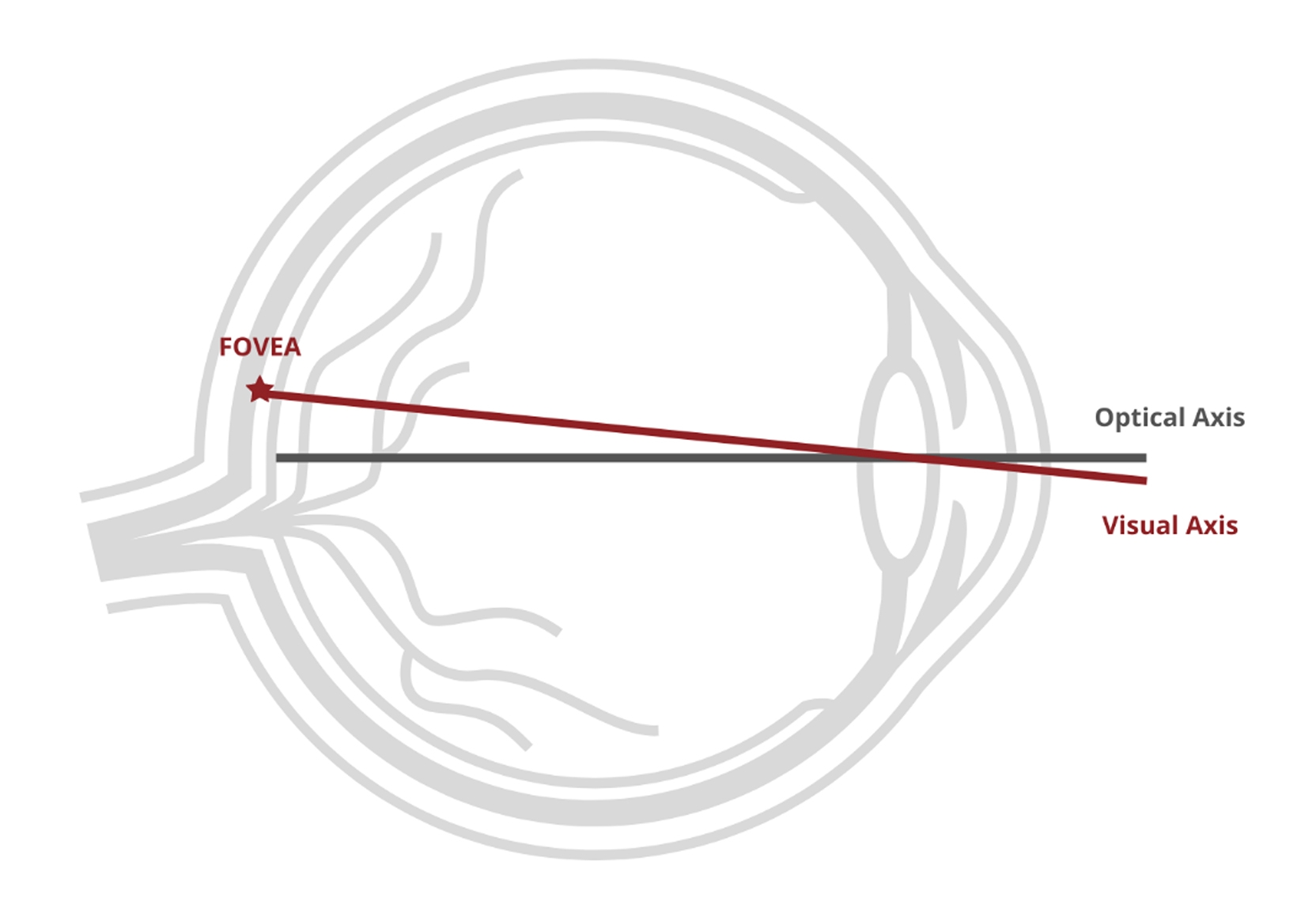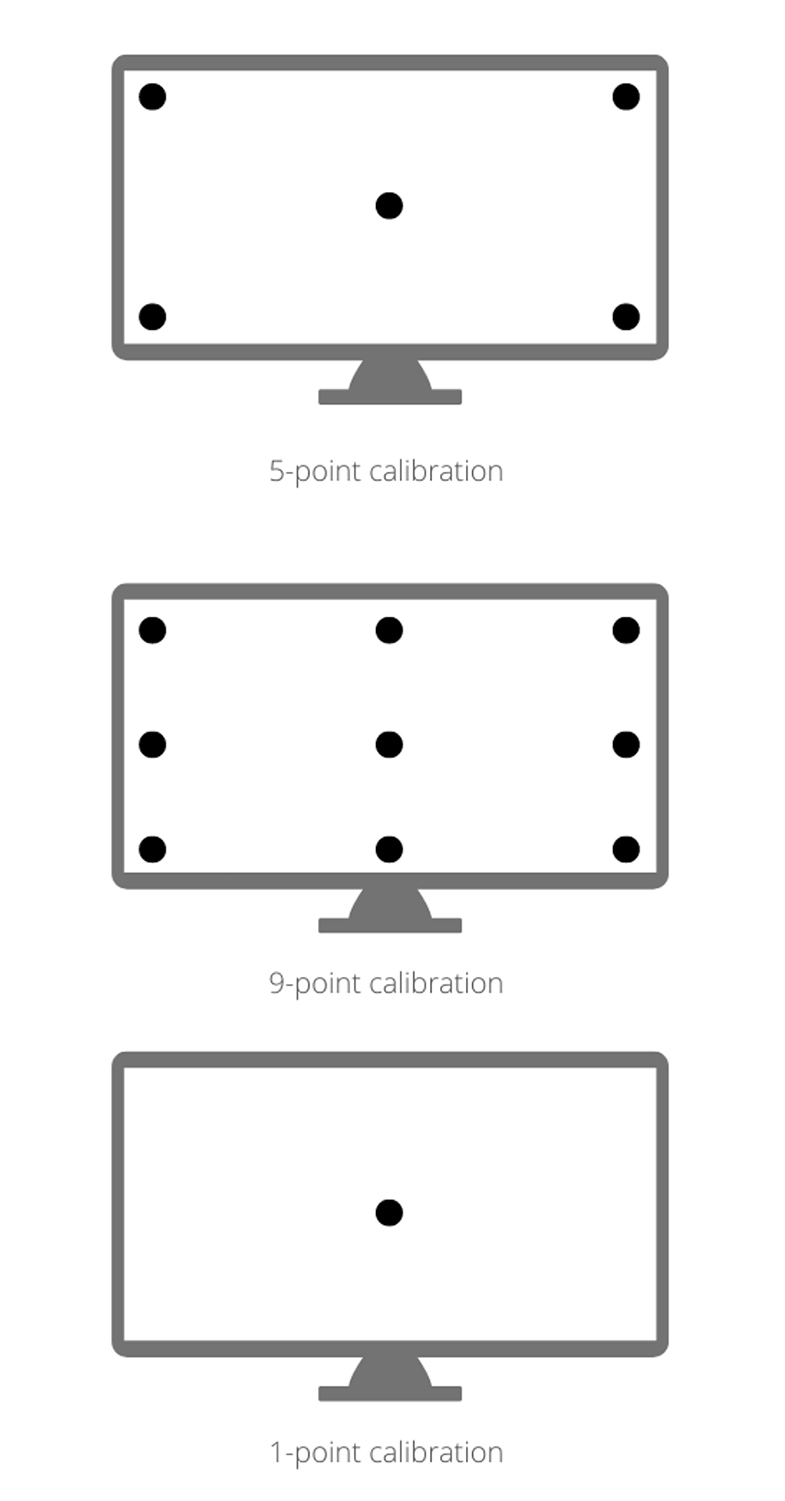18.05.2022
What is calibration and why we need it?
 by Mirta Mikac, Product Manager
by Mirta Mikac, Product Manager
Our eyes mirror our world since they are the medium through which the acquirement of surrounding information in our visual field occurs. It is possible to analyze eye behavior to determine individuals’ visual perception and intention by collecting information about eye movements with eye tracking devices. However, the acuity with which the surrounding scene is registered in our visual field is uneven, meaning that our visual perception of the various scene elements differs within the retina. Only the part of the scene falling in the middle of the retina, on the fovea, is seen with the correct sharpness, while other retinal regions register contours and fast movements. In order to obtain reliable insights into the individuals’ visual behavioral patterns, prior to eye tracking data collection, the correct mapping of the output from the eye tracking device to a gaze point on the screen is necessary. This process is the so-called calibration.
What is calibration?
The calibration can be described as a computation of the systematic and biometric characteristics of the human eye based on the uncalibrated Point-of-Regard (PoR). PoR, in this case, refers to a place where a person is looking at¹. Eye trackers (mobile and desktop-based) compute the relative 3D position of an eye (in relation to the eye tracker) and the direction in which the pupil is gazing. The “optical axis” of the eye is the line going through the center of the eyeball and the center of the pupil². The intersection of that line with the computer screen gives the uncalibrated PoR. There are several reasons why the uncalibrated PoR is not precisely the actual gaze point where the user is looking at:
- The fovea (the point on the eye’s retina where one sees the sharpest) is typically not directly opposite to the pupil but slightly offsite.

When a person looks at an object, a light ray from that object enters the eye via the pupil and hits the fovea. That line (defined by fovea and pupil) is called the “visual axis” of the eye. For most people, the visual and optical axes are not the same; they differ by some minimal degree called angle kappa². Either positive or negative angle kappa may result in the nasally displaced light reflex. An example would be the case of strabismus (misalignment of the visual axis of one eye compared to that of the other) and strabismic deviation, where the image is shifted to the more peripheral part of the retina in the affected eye resulting in roughly 44% loss in the visual acuity³.
- There are different kinds of measurement errors. Suppose the assumptions of the geometric setup (i.e., the position of the eye tracker in relation to the assumed monitor plane) are not perfectly correct. In that case, computed PoRs may have an offset. There may also be computational errors in the model on which the eye tracking algorithms are based. All those errors are called “system bias”.
Hence, performing a calibration prior to data collection compensates for both the misalignment of the optical and vertical axis and the system bias.
How does calibration work?
The calibration process is a sequential data acquisition for one or more points in a different position on the screen. Therefore, the participant must look at the calibration points while the software records the uncalibrated PoR data. During the presentation of each calibration point, it is possible to calculate the difference between the computed (uncalibrated PoR) and the displayed calibration point, which is a sum of the difference between the visual and optical axes and the system bias. Based on the recorded data during the presentation of one or more calibration points, a correction function is computed and applied to the uncalibrated PoR. Calibration can, however, only compensate those systematic bias (like a fixed bias). It can, therefore, enhance an eye tracking system’s accuracy¹, but not its precision.
Usually, the standard calibration process shows 5 to 9 points to get a useful calibration that works in most areas of the screen1. However, some eye tracking devices can compute a sufficient accuracy with a 1- or 2-point calibration, which is preferred in developmental psychology or assistive technology. On the other hand, even 12-point calibrations are common with different eye tracking systems to improve accuracy. Regardless of the points used, each point needs to be presented long enough to gather sufficient data. Constant re-calibration of each subject during the experiment is not required unless the environmental error sources such as a change in light environment emerge. The re-calibration or a drift correction should be done to compensate for increased accuracy over a more extended period.

How to optimize calibration procedure?
A few crucial requirements need to be met in order to achieve good calibration.
Instead of using only one calibration point, it is always better to opt for more calibration points to improve accuracy. Technically speaking, the more calibration points used, the better the accuracy. However, inexperienced subjects sometimes struggle to focus on more than five calibration points. Although the calibration process takes only 10 to 30 seconds, inexperienced subjects may have difficulties to focus during the entire calibration process. Therefore, subjects might blink during the repositioning of the calibration points and keep focused while the calibration point is fixed. Special attention should also be paid to the color of the calibration background on the screen. Due to an effect called pupil center shift, it is always suggested that the calibration background is in the brightness range of the stimuli presented in the experiment.
Moreover, subjects should also be reminded that their task is to follow the calibration points during the calibration procedure rather than guess where they might be on the screen. In that case, data with good accuracy for each subject is obtained. In addition to maintaining a comfortable posture during the eye tracking recording and being at the optimal position in front of the eye tracker, subjects should also be reminded to pin their hair away from the face. Adhering to these suggestions results in a smoother calibration process, which increases the accuracy and leads to a better quality of the eye tracking data.
1
Harezlak, K., Kasprowski, P., & Stasch, M. (2014). Towards Accurate Eye Tracker Calibration – Methods and Procedures. Procedia Computer Science, 35, 1073-1081.
2
Artal, P. (2014). Optics of the eye and its impact on vision: A tutorial. Advances in Optics and Photonics, 6, 340-67.
3
Freeman, A.W., Nguyen, V.A., & Jolly, N. (1996). Components of visual acuity loss in strabismus. Vision Research, 36 (5), 765-774.
